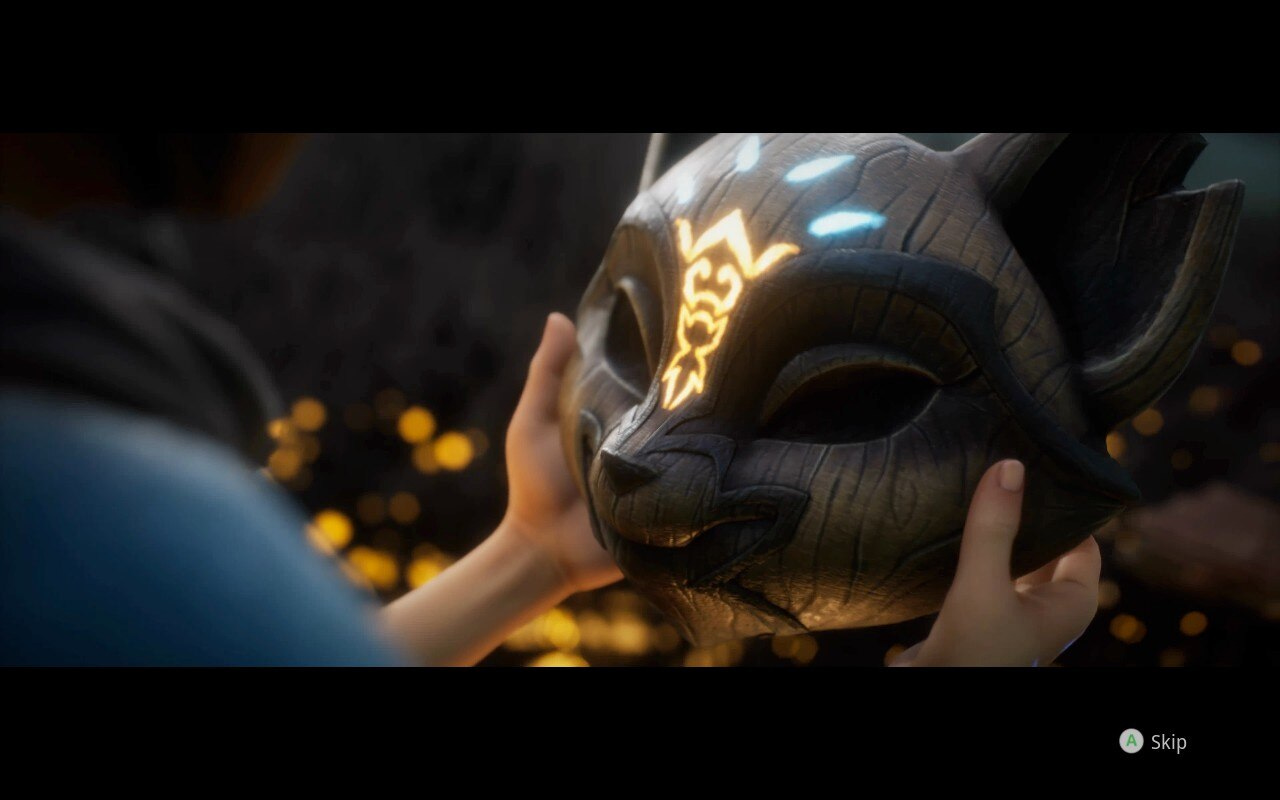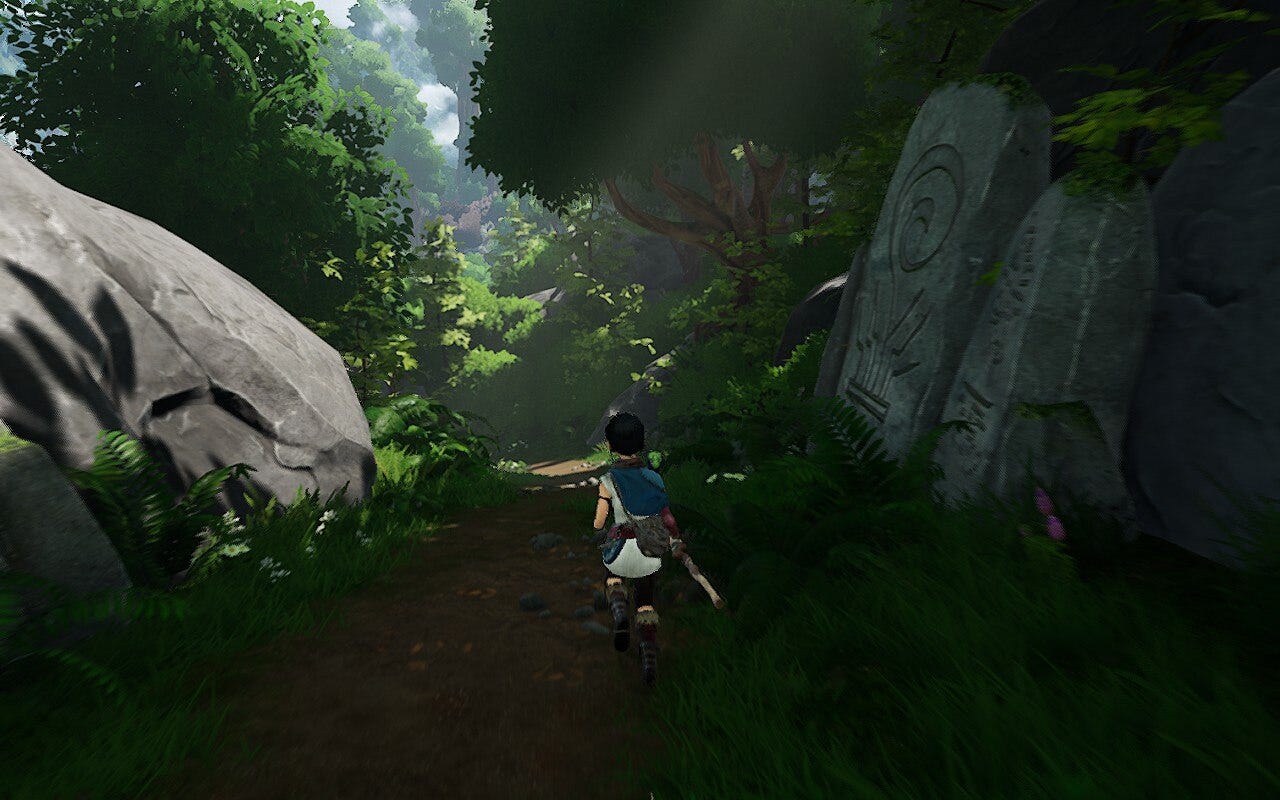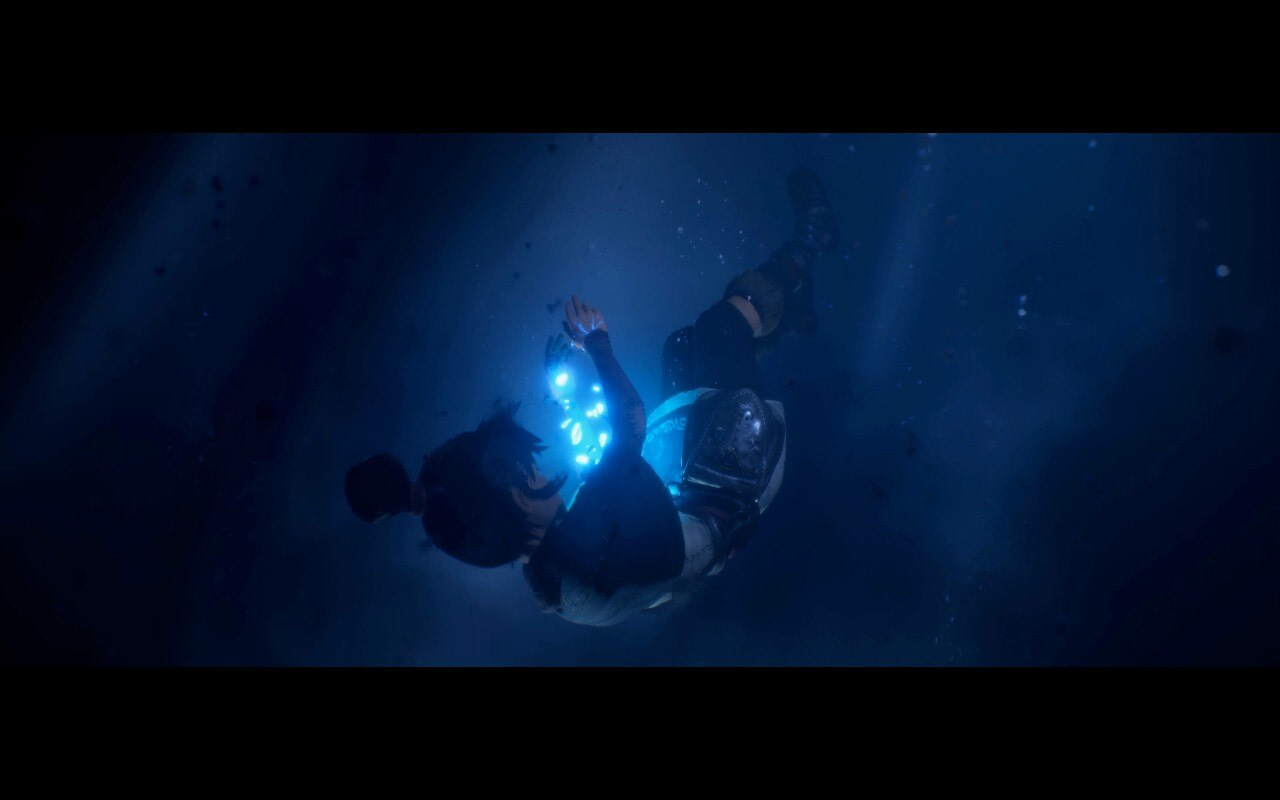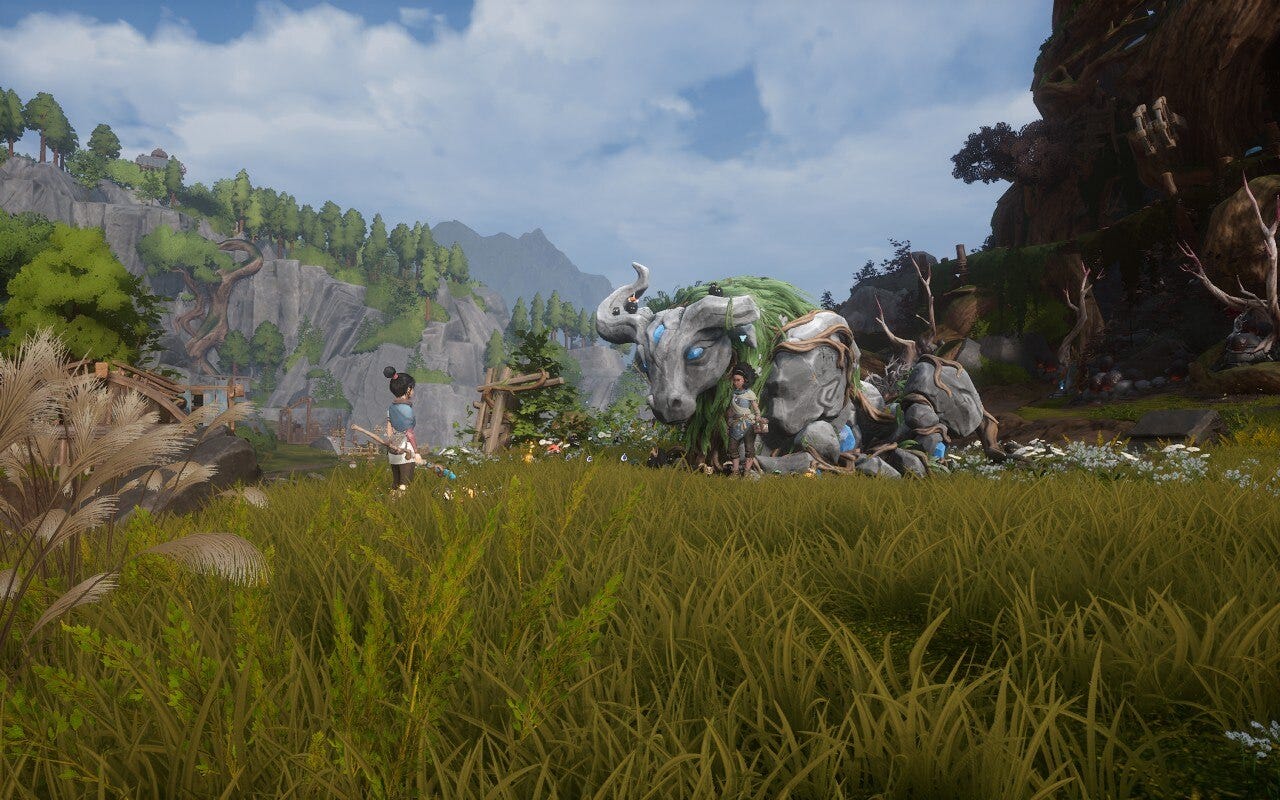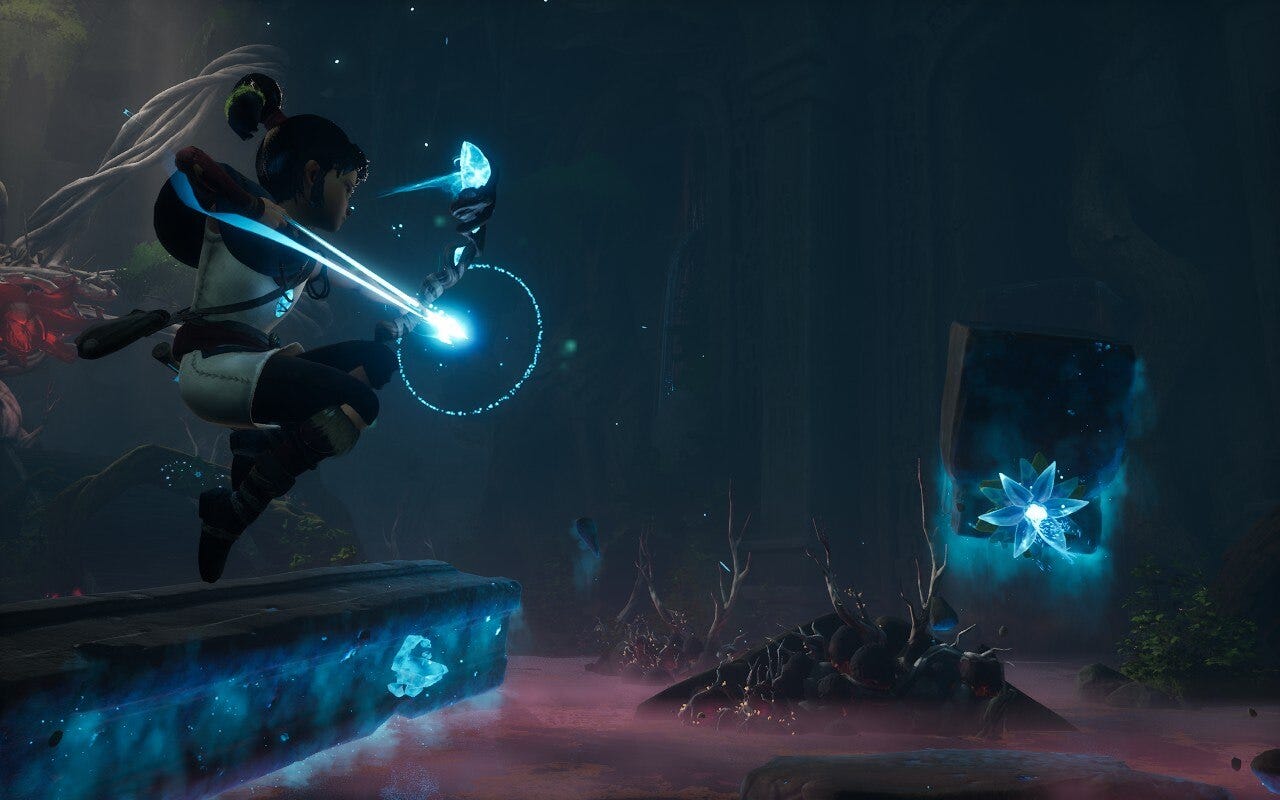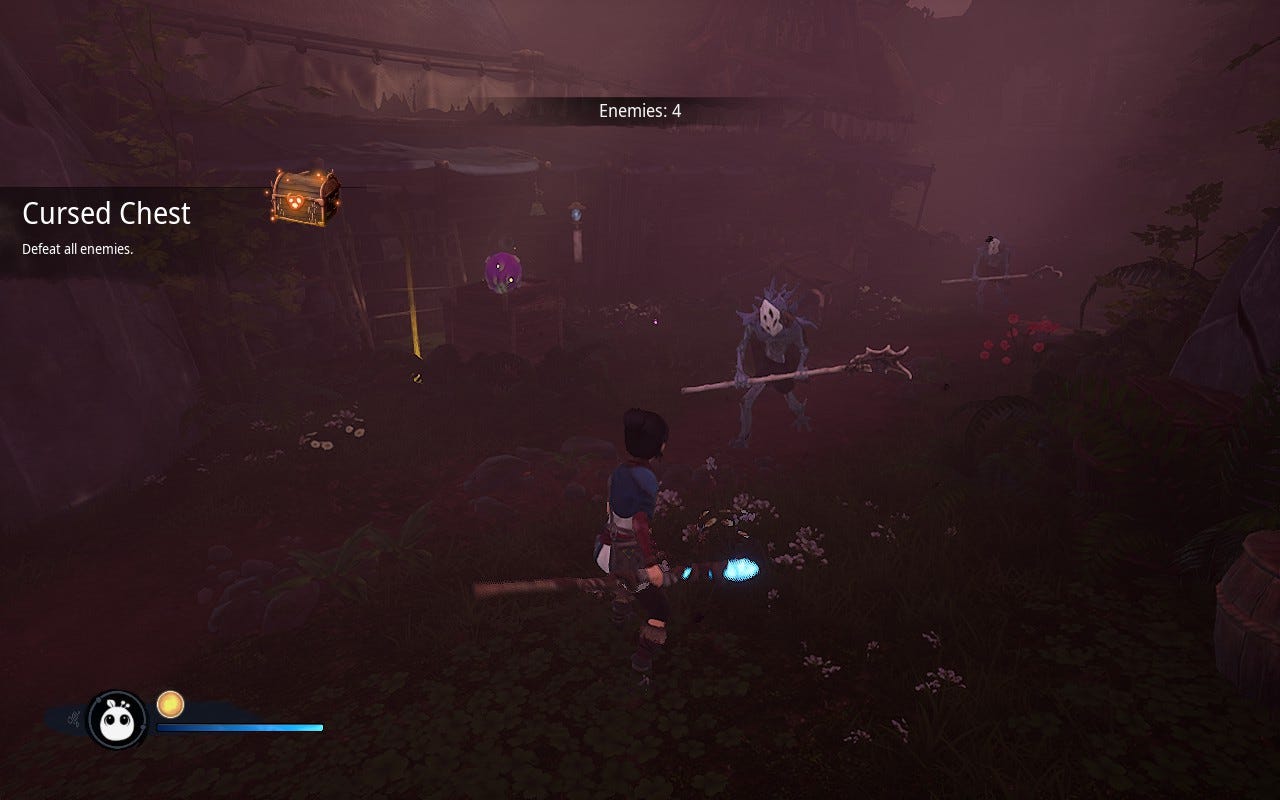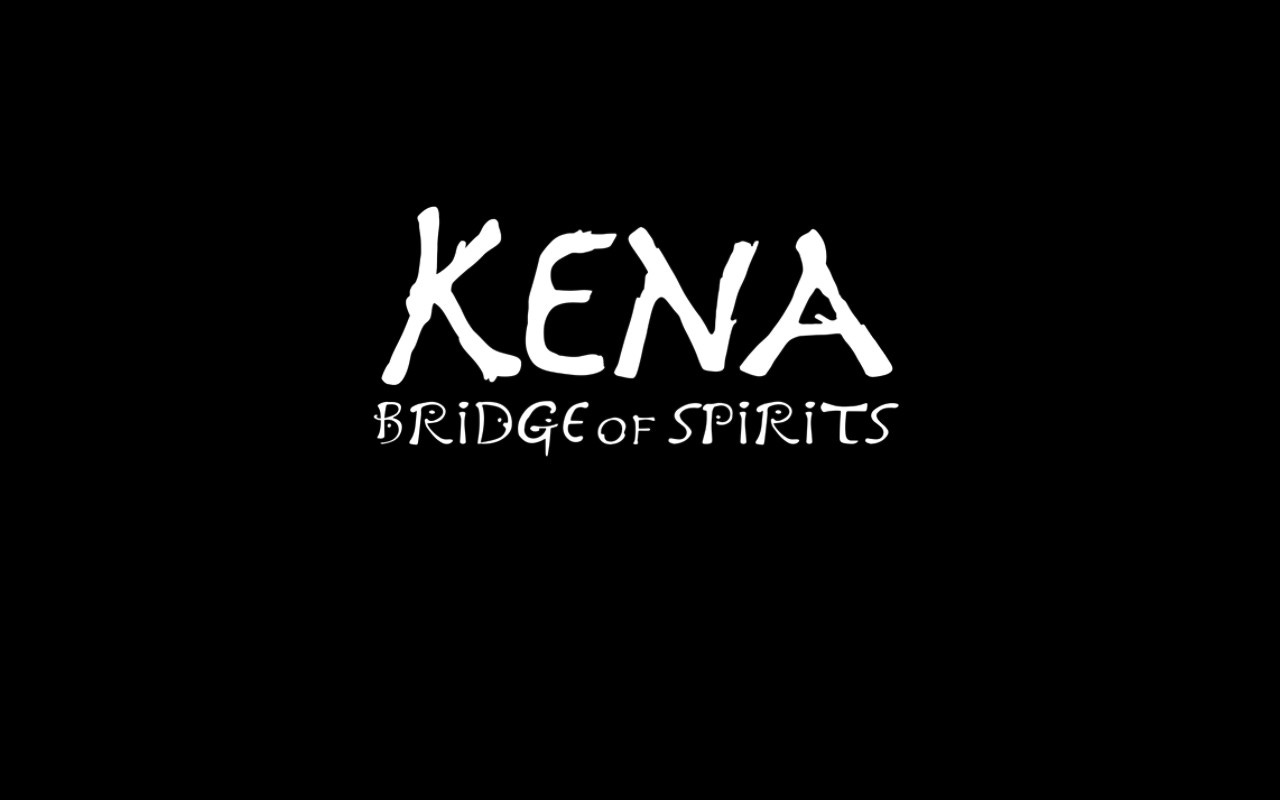Kena: Bridge of Spirits Review
A game with some fantastic parts that can't compensate an underwhelming whole.
Review Code Provided by Renaissance PR & Ember Lab
Note: I played this game on Steam Deck, so even though this game is technically Deck Verified, the performance absolutely colored my final opinion
Have you ever played Ty the Tasmanian Tiger? It’s a game that I think of often (It’s weird, but I’m not joking). I played it when I was a kid, and for some reason, I think I have a copy for both PS2 and Gamecube. When I try to think back about my feelings about the game, I imagine this huge Australian-themed open world with fun puzzles and secrets that could be tackled with Ty’s impressive collection of situation-specific boomerangs. It’s not a critically acclaimed masterpiece, I don’t even think it reviewed that well at the time, but it is always the first game that comes to mind when I think of when I imagine just a stereotypical retro 3D platformer.
Fast-forward more than a decade into the future, and that type of game has almost entirely been lost. Very rarely do we get a game developed by anyone other than Nintendo that attempts to capture the magic of the old 3D platforming action-adventure games. That was until Ember Labs stepped up to the plate to do just that with Kena: Bridge of Spirits.
Before I get into the actual details of the review, I want to make it clear, this is not a bad game. Some people might get sticker-shock by the review score, but I encourage everyone to reference my review guide and understand how I translate my scores. I hate that I even have to make this disclaimer, but I know that unless most people see an 8 as a review score, they automatically think the game is terrible. No, that’s not how I do things here.
Kena: Bridge of Spirits is a jack of trades, master of two, those two being its animation and music. Every aspect of this game is walking a tightrope of pros and cons, and for me, the cons just barely outweighed the pros, but I can easily see others falling to the other side depending on their preferences.
Let’s start where the game is at its strongest, the visuals and music. This game is undeniably beautiful. It sports what I would say are the best-animated cutscenes to ever be in an indie game. I was so impressed that I legitimately had to Google to see if Ember Labs had a history in animation, and they do. This is the team’s first venture into the video games space, and they did a fantastic job leveraging their talents to make the game stand out. Unfortunately for me, I played the entirety of this game on Steam Deck, and the sharp visuals don’t transfer well to the Deck. The graphics and overall visual performance when you’re actually moving around in the world leave a lot to be desired. Kena’s character model has sharp edges, and to get a solid frame rat,e you need to lose a lot of detail in the visuals. It wasn’t the end of the world, it looked alright, but it’s pretty disappointing for a game that is Deck Verified and has a reputation for strong visuals to underperform like this. It’s hard to say that I didn’t factor that into my final score, but knowing that the PS5 and PC visuals scale wonderfully with the hardware, I would say as long as you avoid playing on the Steam Deck and you’ll be in for a treat. The clips that I’ve seen online confirm that as long as you’re on the right system, the gameplay visuals are just as dazzling as the cutscenes.
Before I move on, I need to give the composer, Theophany, their flowers because the soundtrack for this game can move mountains on its own. There were points at the end where I was legitimately getting emotional during the cutscenes just because of the swells and flow of the orchestral ensemble. It was the one aspect of this game that I had zero notes on. It fit the overall theme and mood of the game in a way that’s hard for me to describe. It conveyed joy, intrigue, determination, anger, and sadness all at the perfect moments. Put this one in the indie soundtrack hall of fame.
With stellar visuals and an epic soundtrack, Kena: Bridge of Spirits only needed to deliver on one more component to have an unstoppable presentational force: the narrative. Unfortunately, this is where things start to fall apart.
Holistically, the game is trying to tell an approachable and profound story about the afterlife, grief, and our connection with nature. It’s a commendable message that feels like a respectful way to tell a heavy metaphorical story. In the end, the story wraps up having said almost nothing at all in comparison to the time that was spent trying to say it. The characters are all extremely surface-level, and not a single one is given enough time for us to make a connection with them. Between each section, we are presented with a high-fidelity cutscene featuring some set of characters, only to never see or interact with almost all of those characters again. I kid you not, many of the characters only exist in the game for a section of the game and are never mentioned again.
To make matters worse, noting what you do in the actual gameplay connects back to the story. Except for some environmental interactions, the in-game and cinematic experiences you have are completely disjointed. Because of the moving visual and audio aspects, I desperately wanted to be engaged and invested in the plot, but by the end, I was almost entirely checked out of what was going on.
Up until now, everything I’ve talked about so far has been good or passable. What tipped me over the edge was the gameplay. It’s a double-edged sword. The puzzles and platforming parts of this game are some of the best. I loved the different abilities Kena picks up on her journey. They are genuinely fun to use and introduce a decent amount of variety. A lot of the challenges the game threw at me felt like a fresh take on the classic platformers I grew up on. I’m happy to say that from start to finish, I was finding joy in the puzzle-platform aspects of the game.
The problem with the gameplay is the combat. It’s terrible. The controls are sloppy while the game demands you to be precise. Even playing on normal difficulty, you are constantly beaten into submission by waves upon waves of enemies, a spongey and hard-to-counter-boss, or sometimes both. It’s a joy-sucking cycle that almost ruined the game for me.
The encounters quickly became predictable and dull, and the handful of times when you get a unique boss fight, it ends up feeling extremely long and tedious with the unwieldy controls. The standard enemies are fine, but the strongest set of enemies in the game often wouldn’t have easily identifiable weak spots, wouldn’t have clear or telegraphed attack patterns, and would have an absurd amount of health. This often left me in the middle of a fight, wondering what to do or how to defend myself while getting tossed around a baseball between a dad and his son. Couple this with the fact that aspects like lock-on and camera controls were also generally just terrible, and it was pretty much all-around a bad time.
The result left much of my experience with Kena: Bridge of Spirits feeling aimless and repetitive. I was constantly fighting the same enemies in these arena-like areas or getting my teeth kicked in by a boss. Outside of the combat sections, I would then explore this world, doing nothing of value as it pertained to the story, until I eventually triggered a short cutscene that tried its best to put things into context.
I do think there is a good game here, it just fails to come together in a meaningful way. The visuals are stunning, the music talks to your soul, and the puzzle platforming elements capture the magic of old-school titles. Although the story is very light, it does not actively detract from the experience. The combat does. Combat gauntlets are over 50% of the game, and the poor execution quickly begins to rip the game apart at the seams. Because I so actively detested that aspect of the game, I was putting a lot of stock in the narrative and exploration to make up the slack, but instead, all I felt was a sense of emptiness in my actions.
I know some people have enjoyed this game for many of the reasons I have touched on in this review, and if the positive reasons really spoke to you, I think the game is worth trying out. For everyone else on the fence, I can’t recommend this game based on my experience.



